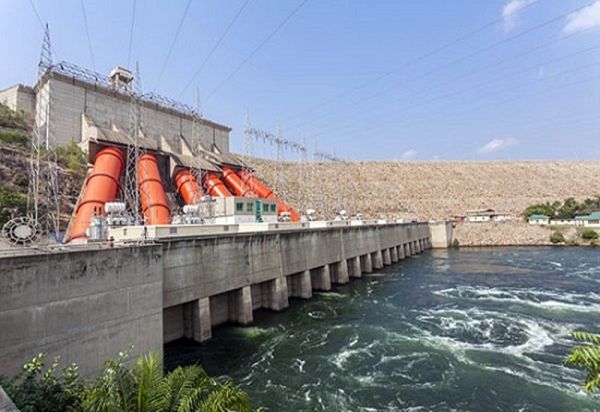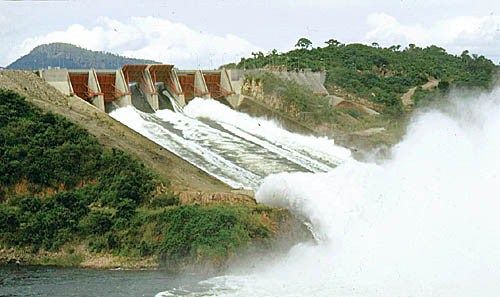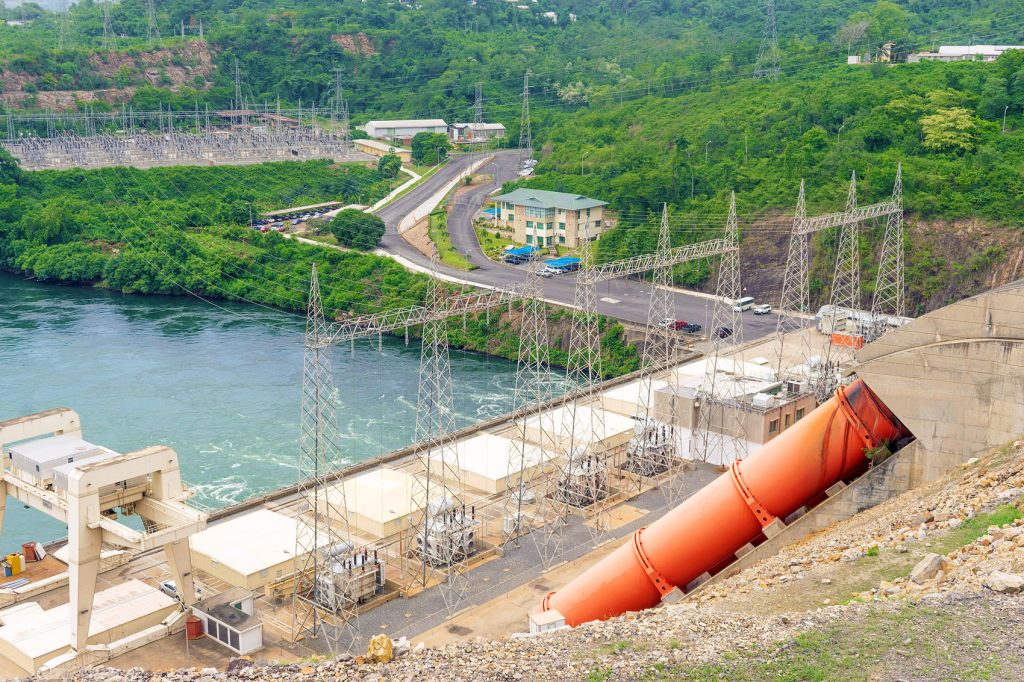In southeastern Ghana, within the confines of the Akosombo gorge is the Akosombo Dam, also known as the Volta Dam. Controlled by the Volta River Authority, this hydroelectric dam, constructed between 1961 and 1965, has not only reshaped the landscape but has also played a pivotal role in powering Ghana’s progress.

Creating Lake Volta: A Giant Reservoir:
The primary objective behind the construction of the Akosombo Dam was to harness the potential of the Volta River for electricity generation, particularly to support Ghana’s burgeoning aluminum industry. However, this endeavor came at a cost. The dam’s construction led to the flooding of a portion of the Volta River Basin, giving rise to Lake Volta—the largest man-made lake globally in terms of surface area. Covering an expansive 8,502 square kilometers, Lake Volta constitutes a substantial 3.6% of Ghana’s total land area.
Powering Industries and Nations:
The Akosombo Dam, hailed as “the largest single investment in the economic development plans of Ghana,” has been a linchpin in providing electricity not only for Ghana but also for neighboring nations like Togo and Benin. The dam’s original electrical output of 912 megawatts (1,223,000 hp) was later boosted to an impressive 1,020 megawatts (1,370,000 hp) through a retrofit project completed in 2006.
Human and Environmental Impacts:
While the Akosombo Dam has been instrumental in advancing Ghana’s industrial landscape, its construction brought about significant challenges. The flooding caused by the dam’s creation displaced around 80,000 people, leading to the establishment of 52 resettlement villages. The impact on the environment has been notable, with seismic activity causing coastal erosion and changes in hydrology affecting microclimates. Soil fertility around Lake Volta diminished, necessitating the use of fertilizers, resulting in eutrophication and the proliferation of invasive weeds that hamper water navigation and provide a habitat for disease vectors.
Visionary Origins and Construction:
The conception of the Akosombo Dam dates back to 1915, proposed by geologist Albert Kitson. However, it wasn’t until the 1940s that plans began to take shape. President Kwame Nkrumah, recognizing its pivotal role in Ghana’s development, embraced the idea. The dam, a 660-meter-long and 114-meter-high rock-fill embankment, was brought to life by an Italian consortium, Impregilo, which had recently completed the Kariba Dam.

Economic Aspirations and Aluminum Industry:
The Akosombo Dam was not merely a hydroelectric project but a catalyst for broader economic aspirations. The aluminum smelter at Tema, powered by the dam, was a key component. Overseen by the American company Kaiser Aluminum, the smelter received financial backing from Valco shareholders, with support from the Export-Import Bank of the United States. The project’s total cost amounted to $258 million.
Challenges and Adaptations:
The construction of the Akosombo Dam was not without challenges. Flooding in 1963 delayed the project, and tragically, 28 workers lost their lives during its development. Despite adversities, the dam was completed a month ahead of schedule. The associated Lake Volta reservoir necessitated the relocation of 80,000 people, a complex process that posed social and economic challenges.
Power Generation and Challenges:
The Akosombo Dam, a powerhouse of electricity generation, initially supplied 20% of its output to Ghanaians and the remaining 80% to Valco. Over the years, Ghana’s growing demand for power led to a shift in the dam’s utilization, serving domestic needs to a greater extent. However, challenges such as lower lake levels and increased demand have led to rolling blackouts and significant power outages.
Navigating the Future:
As Ghana navigates its path toward sustained growth, the Akosombo Dam stands as both a symbol of achievement and a reminder of the intricate balance between progress and its repercussions. Its towering presence continues to illuminate homes, power industries, and contribute to the economic vitality of the region. While challenges persist, the resilience of the Akosombo Dam reflects the resilience of the Ghanaian spirit as the nation forges ahead into a promising future.






































